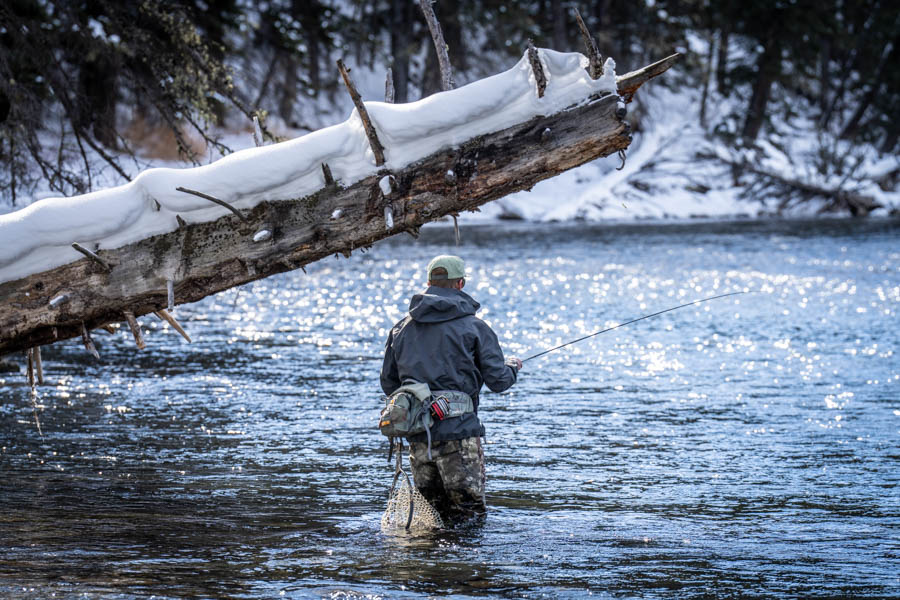
Summary of current conditions
Winter time water levels are always on the low side and there is a lot of definition to the water. The key to winter fishing is finding slower holding water and fishing in the afternoon when water temperatures are at their peak.
Important winter hatches
Midge hatches can be strong in some locations in the late morning and early afternoon when warmer mild weather settles in. Otherwise the fishing is a nymphing game.
Early winter fly box
Fly selection is simple in the colder months. If there is a midge hatch choose your favorite midge dry or cluster pattern. Palamino midges and Griffith’s gnats are good enough. For sub surface, try a rubber legs, egg or worm pattern on top and a smaller midge larva or baetis nymph on bottom.
Where to find trout in early winter
Water temps are cooler and trout have moved out of the heavy water and riffles in favor of softer holding water. Trout will be very heavily concentrated in large, slow runs and nearly absent everywhere else. It pays to skip a lot of water and only focus on these slower runs. Fish slow and deep in the peak afternoon hours.
Looking for More Great Content?
6 (PLUS ONE) Essential Flies for Fall Fishing in Montana
7 Best Tips for Walk and Wade Fishing in Montana
6 Great Tips for Fishing Hoppers, Ants, Beetles
Dry-Dropper Rigs: When to Use and When Not to Use
How to Rig and Fish a Dry-Dropper Set Up for Montana Fishing
